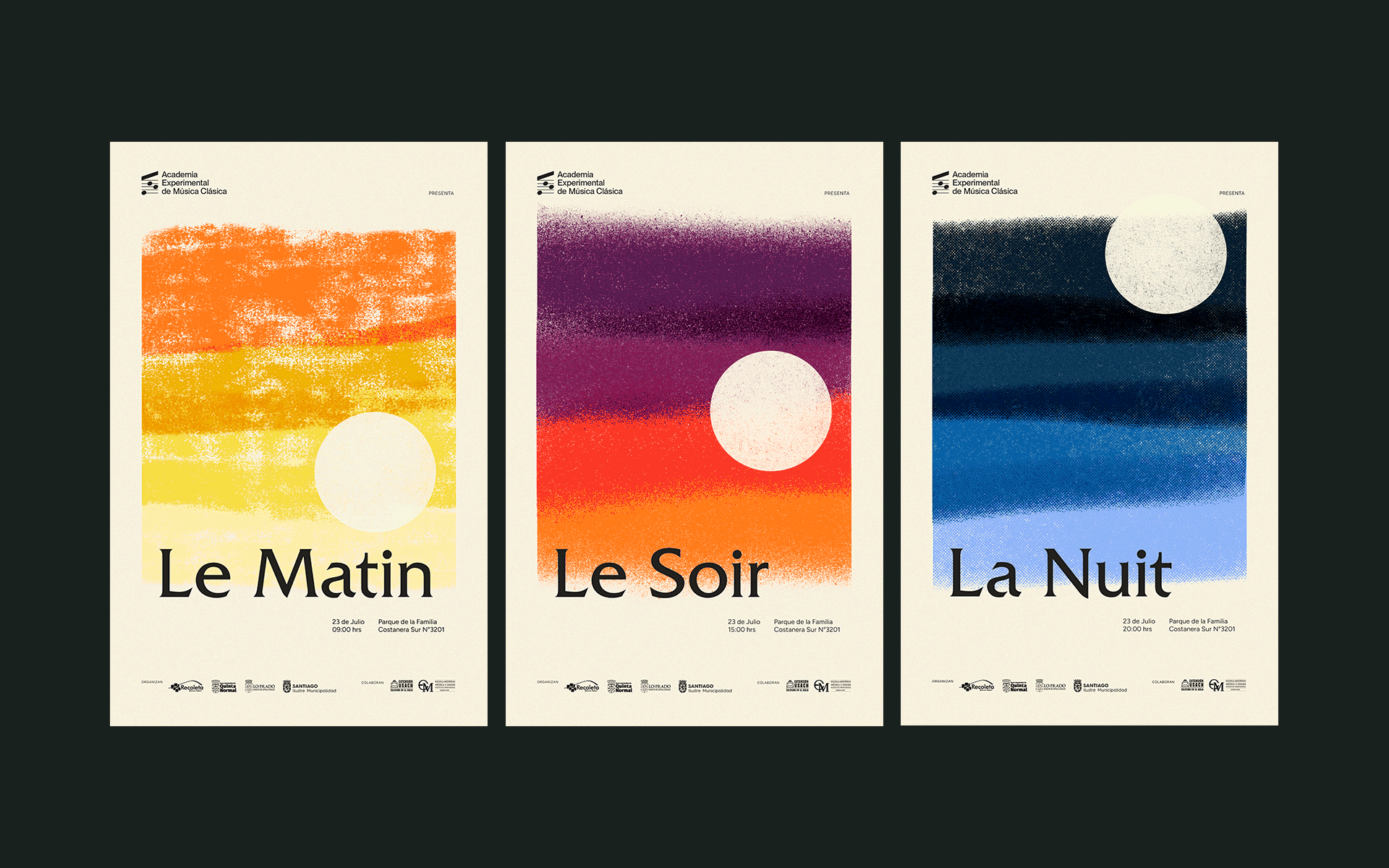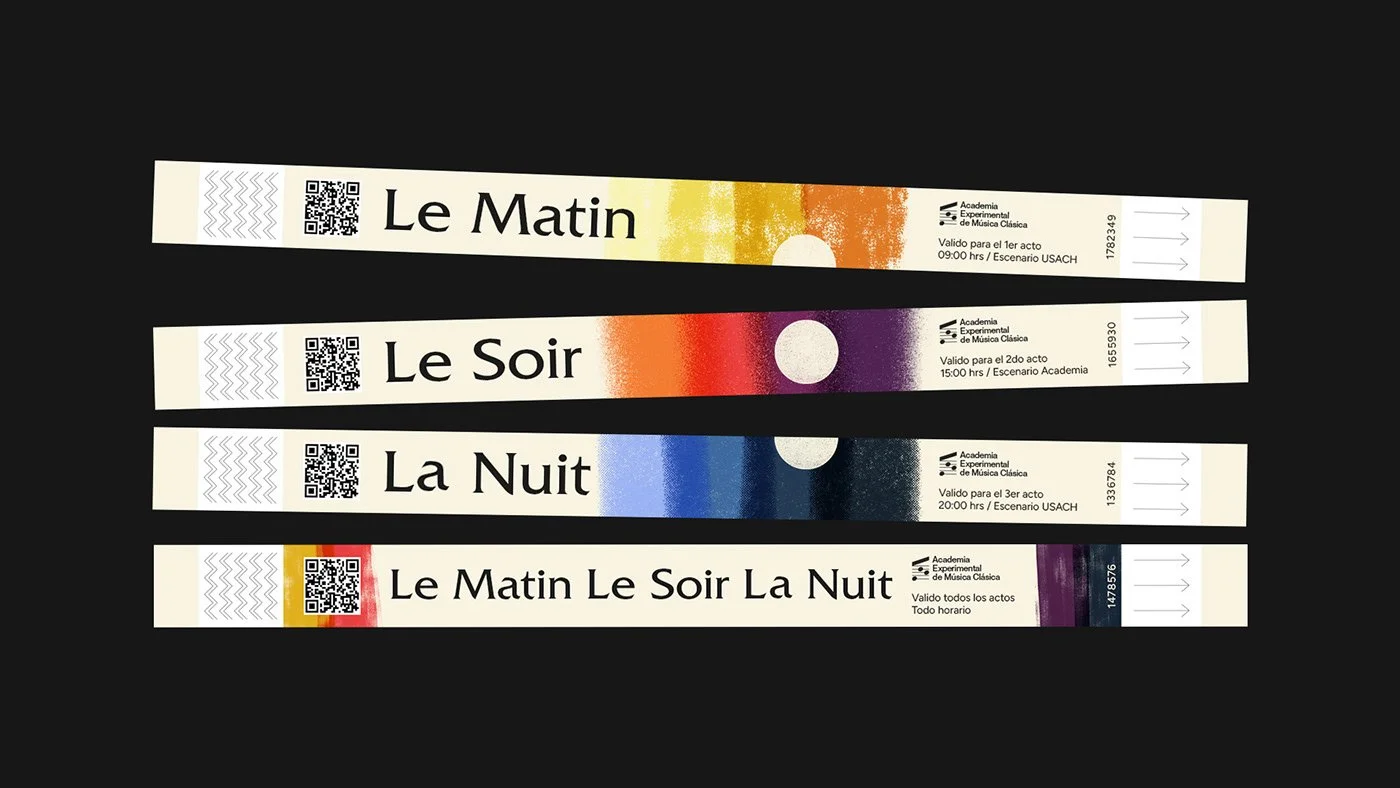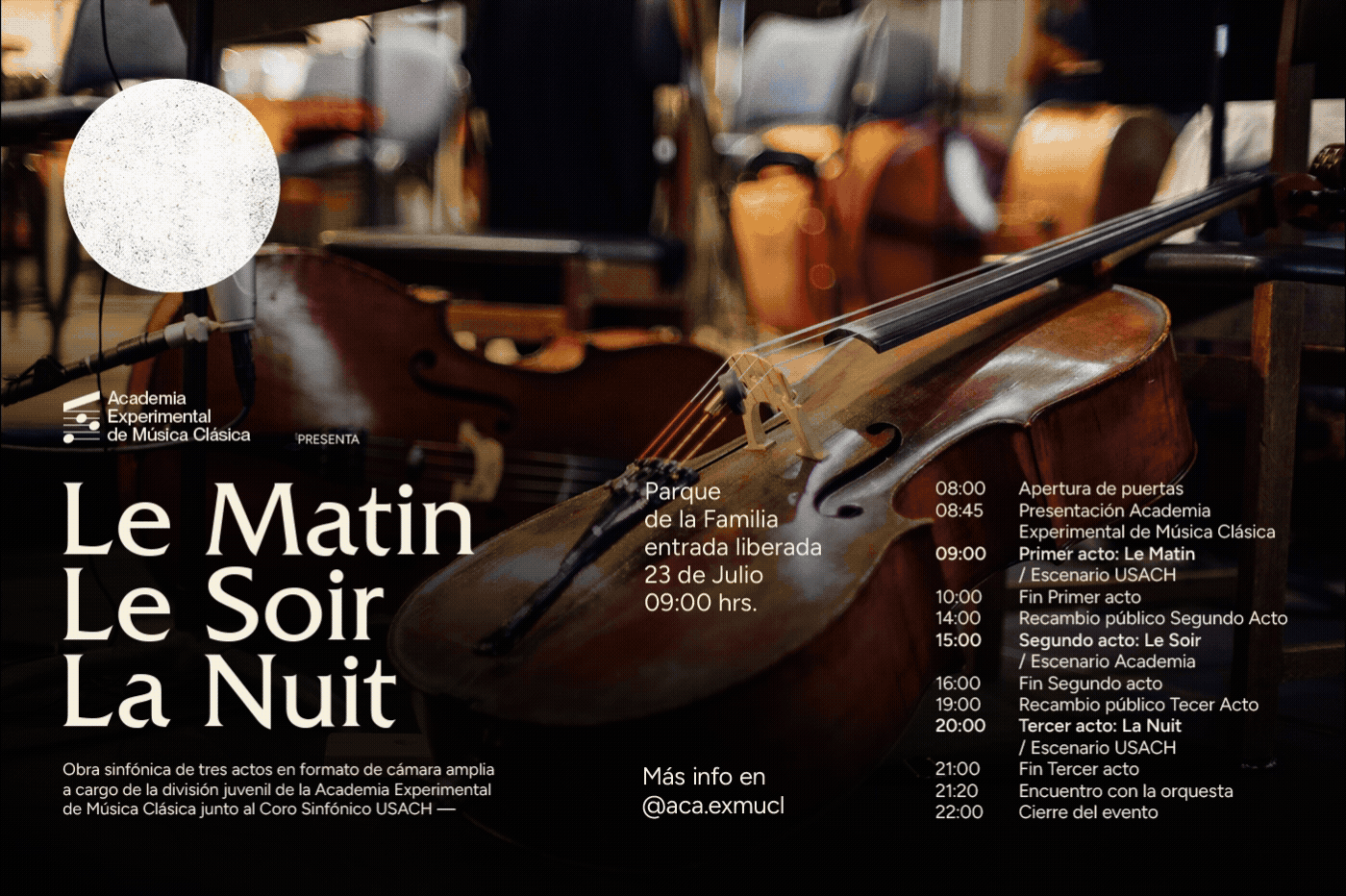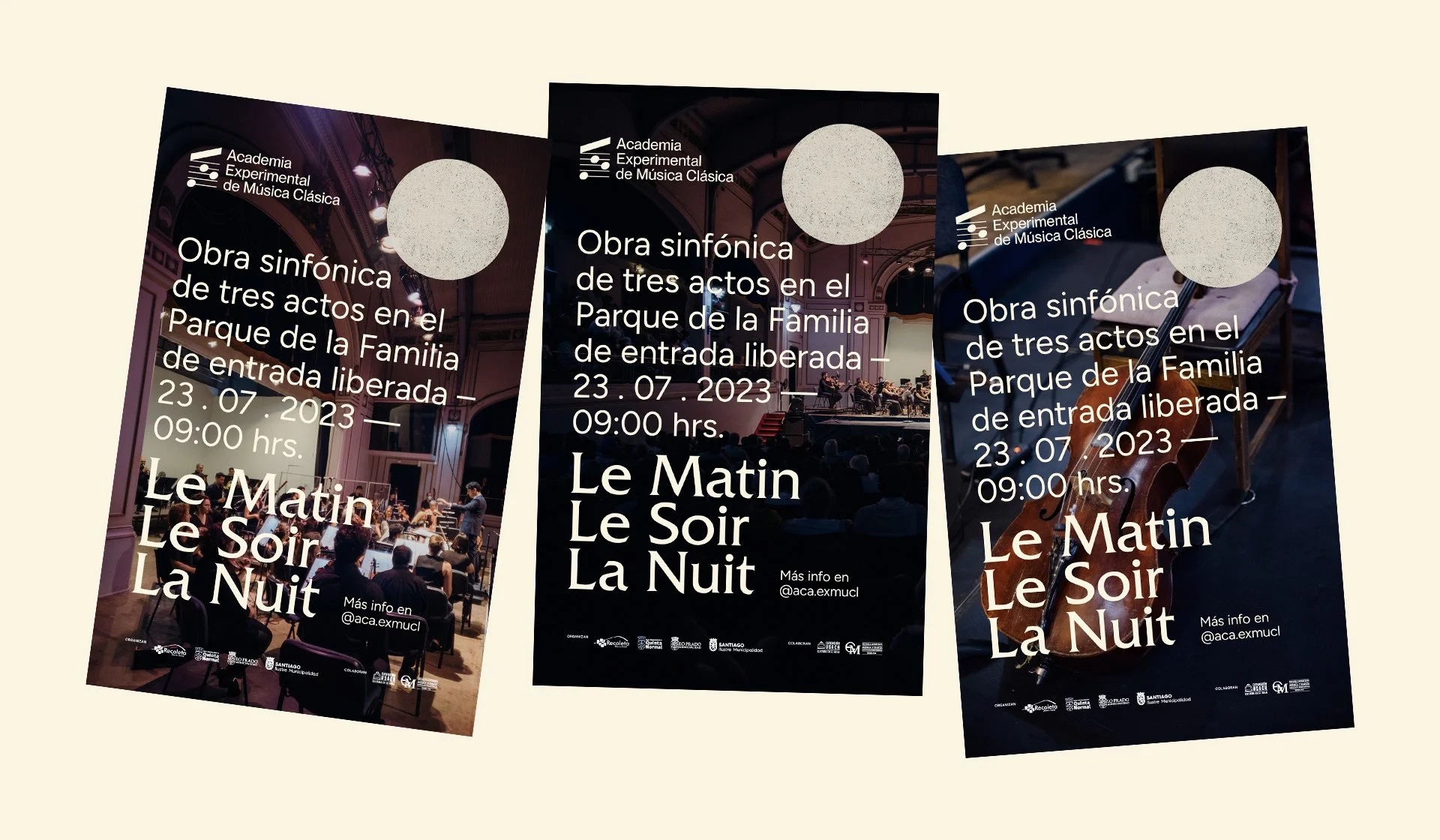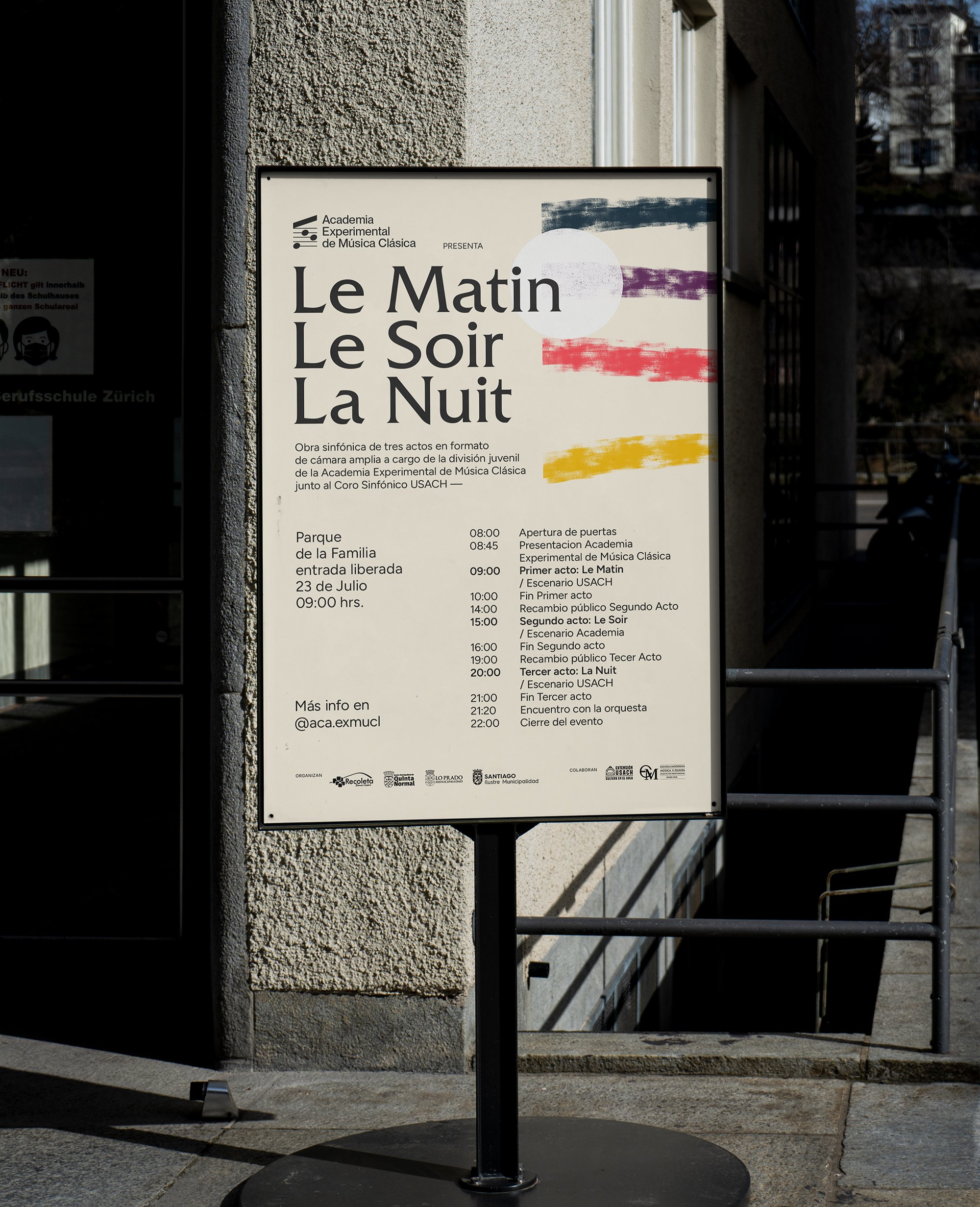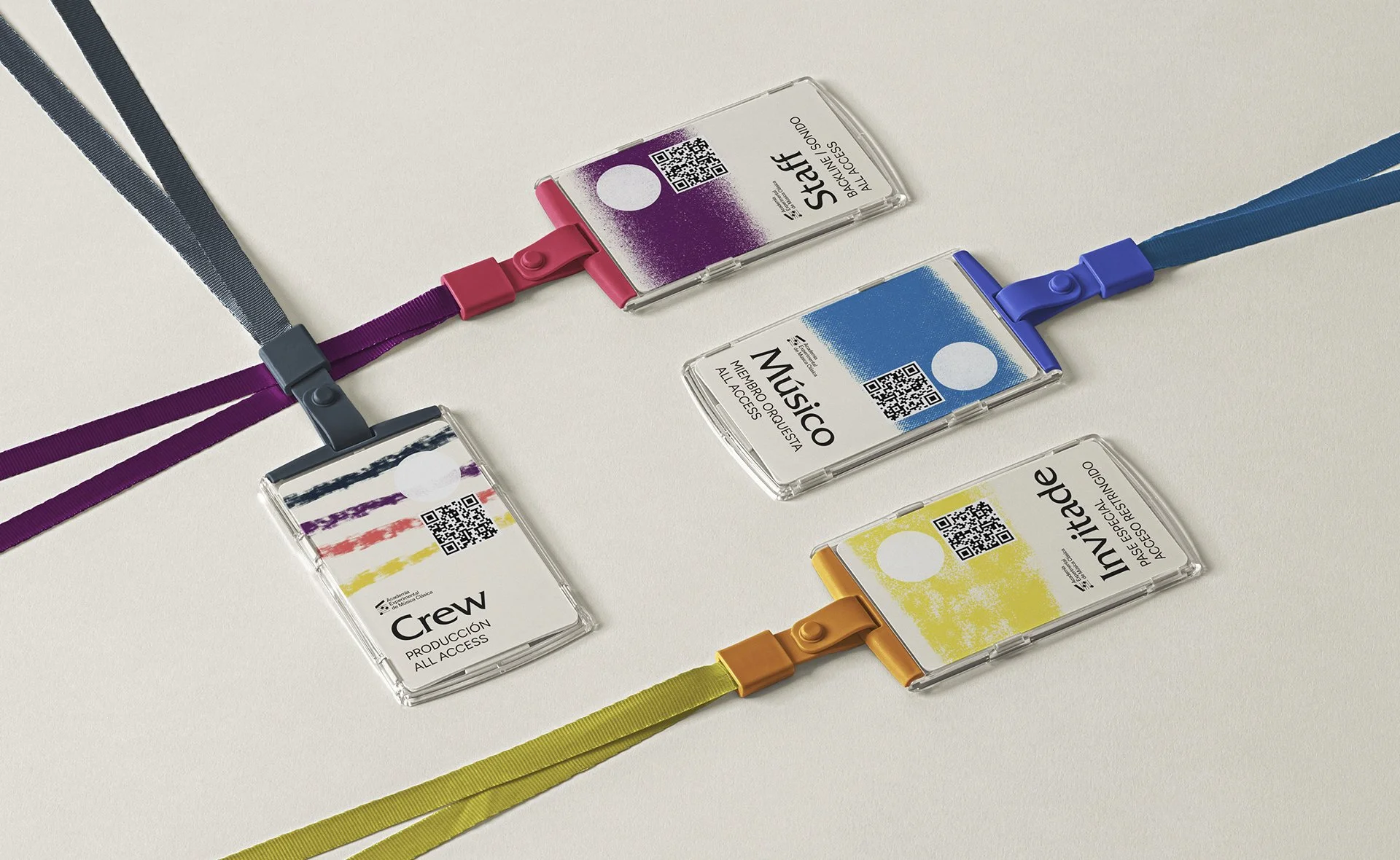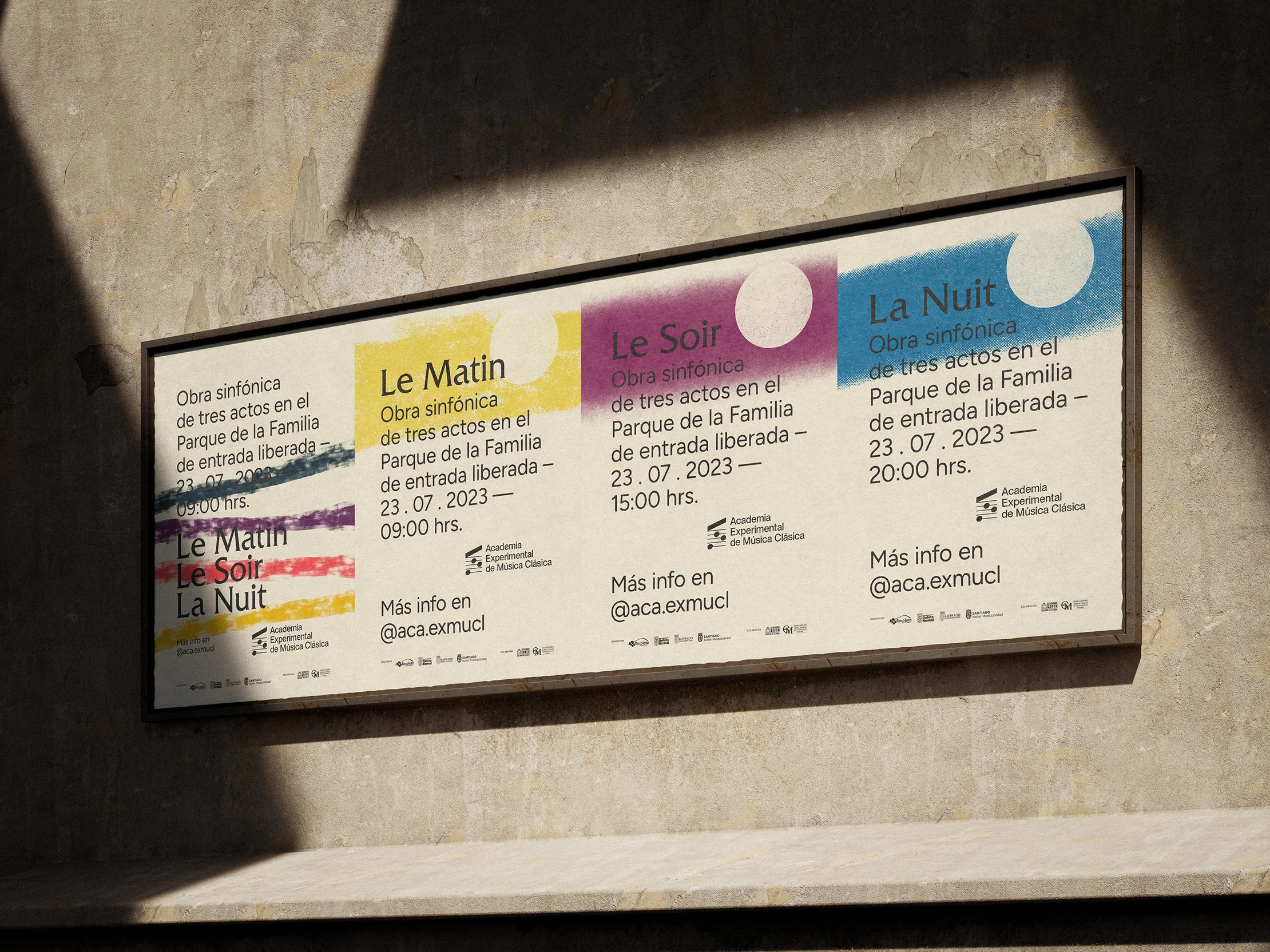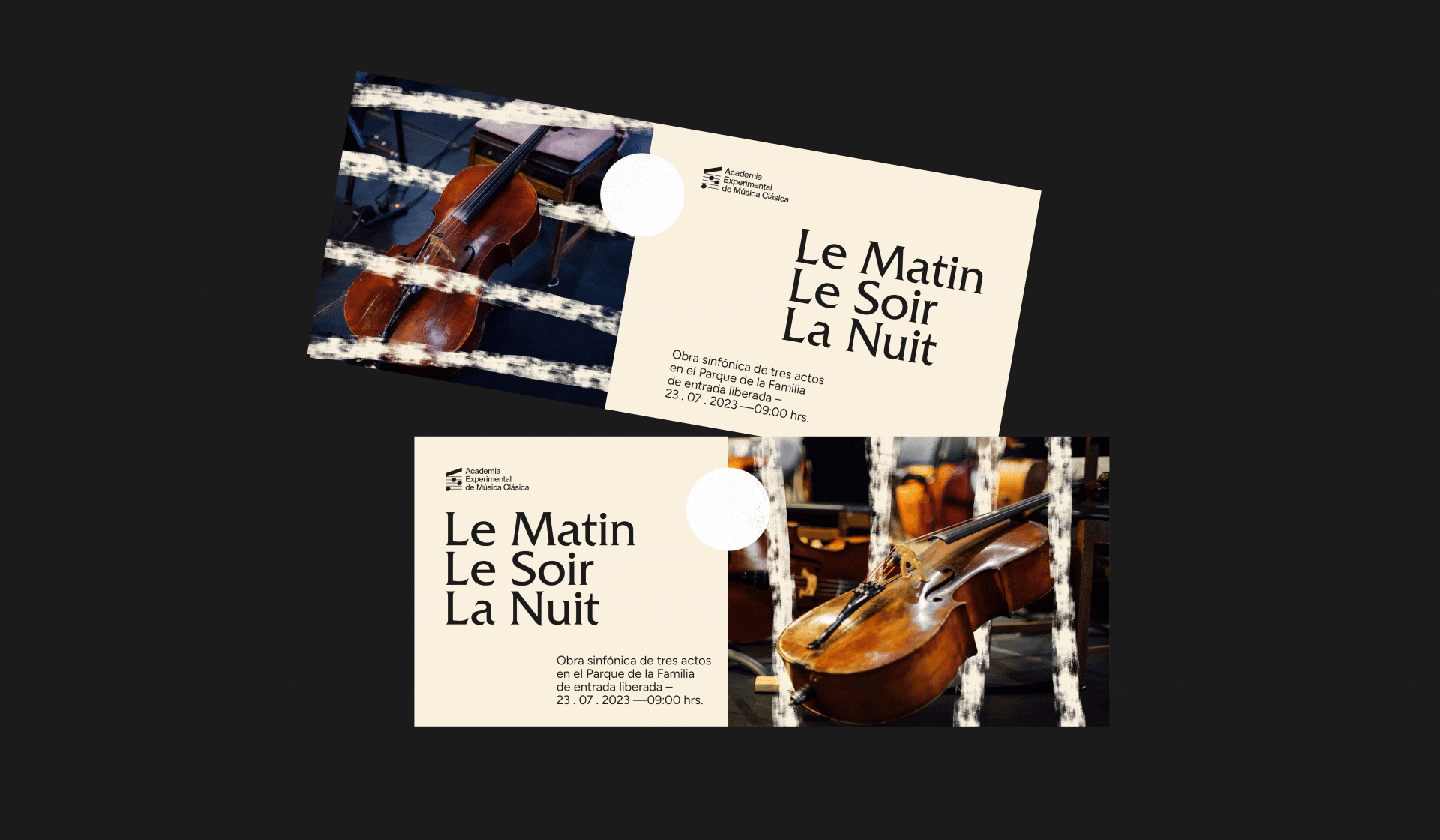Le Matin, Le Soir, La Nuit
“Le Matin, Le Soir, Le Nuit” is a three–movement symphonic work presented by the Experimental Academy of Classical Music, a program that brings together young musicians between 15 and 22 years old from underserved neighborhoods in Santiago, Chile, offering them a space to grow and develop through art.
After two years of study, the Academy organized a free outdoor concert in collaboration with several local municipalities. The youth orchestra was joined by the Symphonic Choir of the University of Santiago—musicians with decades of experience—creating a shared stage that symbolized access, community, and artistic exchange.
The visual identity for the event aimed to merge music and art in a way that felt open, warm, and welcoming. Because the concert would take place in a public park that connects the four districts these students come from, the design needed to feel communal rather than exclusive. And since the project was publicly funded and resources were limited, we focused on essential printed materials and a few strategic digital pieces—no full campaign rollout, just thoughtful communication where it mattered most.
The conceptual foundation came from the structure of the symphony itself: morning, evening, and night. Instead of leaning into traditional classical concert aesthetics, the identity adopts a contemporary and youthful tone—simple, expressive, and easy to connect with. The gradient colors of the sky became the palette, and a recurring white circle represents both the sun and the moon, guiding the audience visually from one act to the next.
To bring the experience closer to the public, I attended rehearsals with photographer Pablo Selman, gathering images of the musicians to integrate into the graphic system. This helped ground the identity in reality—showing the people behind the performance, and making the event feel familiar and inviting, especially for audience members who may have never attended a symphonic concert before.
In addition to the promotional pieces—which included billboards, posters, and animated screens outside nearby metro stations—we also produced printed materials for the day of the event. These included flyers, tickets, wristbands, and credentials for musicians, staff, and guests, as well as the full concert program. Together, they formed a consistent visual language that unified the experience from the street to the performance space.
Another key part of the project was designing the logo for the Experimental Academy of Classical Music. The goal was to reference classical music directly, but with a tone shaped by youthfulness and collective energy—something that honors tradition without feeling distant or academic. The logo comes to life in the animation I developed for its presentation, where movement and rhythm reinforce the Academy’s values of collaboration, learning, and community.
Projects like this are deeply meaningful to me. Working with social initiatives and public programs allows me to contribute through my craft—especially when resources are limited but the purpose is profound. It’s work that reminds me why design matters.


